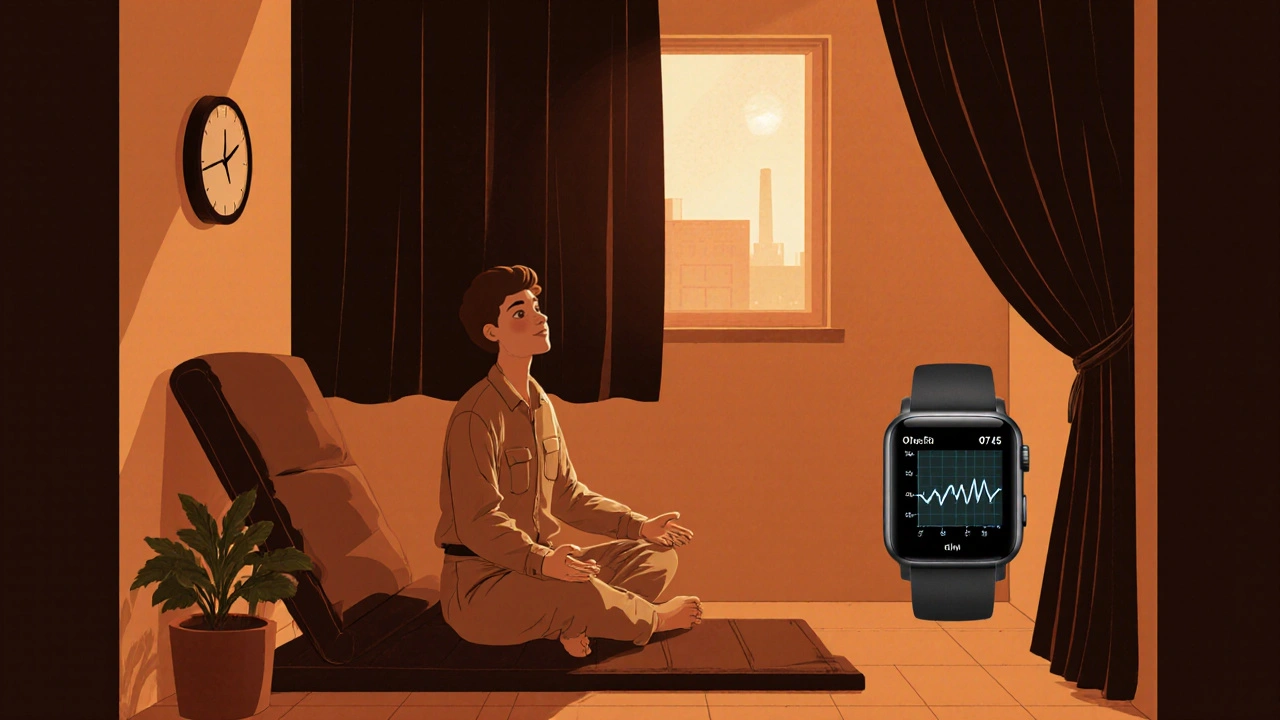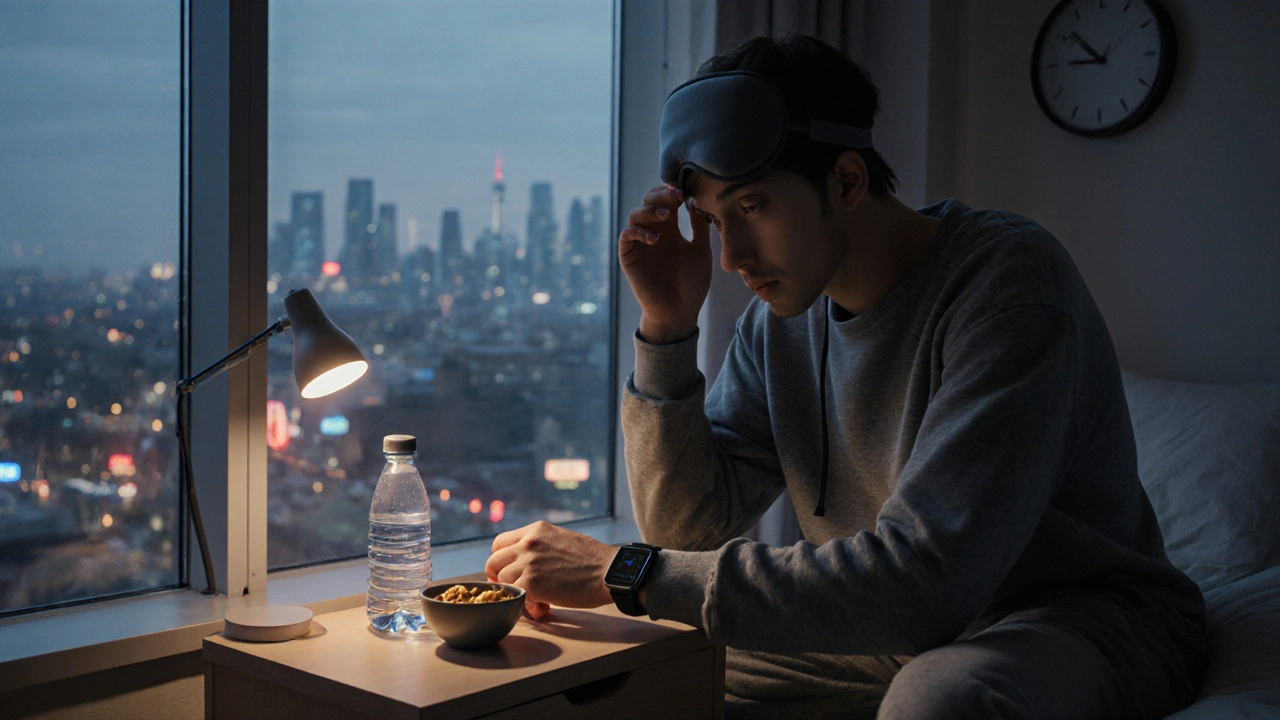Shift Worker Stress Level Calculator
Use this calculator to estimate your stress level based on your shift pattern, sleep habits, and work environment. The score helps identify key areas for stress management strategies.
Your Stress Level Assessment
When you hear stress management for shift workers, you might picture a fancy workshop or a handful of meditation apps. In reality, it’s a daily survival kit that keeps your mind, body, and paycheck intact.
Quick Takeaways
- Shift work throws off your circadian rhythm, raising cortisol and fatigue levels.
- Unmanaged stress can lead to burnout, heart disease, and accidents on the job.
- Simple habits - consistent sleep windows, micro‑breaks, and mindful breathing - cut stress in half.
- Employers can lower turnover by offering flexible scheduling and Employee Assistance Programs.
- Tracking tools (sleep apps, wearables) give real‑time feedback to fine‑tune your routine.
What Makes Shift Work So Stressful?
Shift Work is a labor pattern that falls outside the traditional 9‑to‑5 schedule. Whether you’re on the night line at a factory, rotating between early mornings and late evenings in a hospital, or manning a 24‑hour call‑center, your body faces a constant tug‑of‑war with daylight.
The culprit is the Circadian Rhythm, the internal clock that tells you when to be awake, eat, and sleep. When you flip the switch at 2am, melatonin - the hormone that signals sleep - drops, while cortisol - the stress hormone - spikes. This hormonal roller‑coaster fuels irritability, sluggish thinking, and a chronic “on‑edge” feeling.
Over weeks, the mismatch turns into Sleep Deprivation, which sharpens the brain’s reaction to stress and dulls decision‑making. The result? Higher accident rates, more sick days, and a looming risk of Burnout, a state of emotional exhaustion that wipes out motivation.

Why Managing Stress Isn’t Optional
Research from the National Institute for Occupational Safety and Health (NIOSH) shows that shift workers face a 30% greater chance of cardiovascular disease than day‑time employees. High cortisol levels also suppress immune function, making you more vulnerable to colds, flu, and even long‑term metabolic disorders.
Beyond health, stress hits performance. A 2023 study of emergency‑room nurses found that each hour of overtime increased medication errors by 12%. For factories, the cost of stress‑related injuries climbs to $2,000 per worker per year. In other words, unchecked stress hurts you, your coworkers, and your bottom line.
Core Strategies to Tame Stress
Below are the five pillars that work across industries. Pick the ones that fit your schedule, then layer them for maximum impact.
- Consistent Sleep Windows: Even if your shifts rotate, try to keep a 6‑hour block where you always sleep, regardless of the clock time. Darken the room, use earplugs, and treat the space as a “sleep sanctuary.”
- Micro‑Breaks: Every 90‑minutes, step away for a 5‑minute stretch or light walk. Research shows that brief physical activity lowers cortisol by up to 15%.
- Mindfulness Practice: A quick 3‑minute breathing exercise (inhale4, hold2, exhale6) resets the nervous system. Mindfulness has been linked to a 20% reduction in perceived stress among night‑shift nurses.
- Nutrition Timing: Favor protein‑rich snacks (nuts, Greek yogurt) during night shifts to stabilize blood sugar. Avoid caffeine after the first half of your shift to protect downstream sleep.
- Social Connection: Schedule a weekly video call with family or a hobby group. Social support buffers the physiological stress response.
Putting It All Together: A Sample Daily Routine
Below is a template for a rotating 10‑hour night shift (22:00‑08:00). Adjust the times to match your exact schedule.
- 20:00 - Light dinner (protein + complex carbs); avoid alcohol.
- 21:30 - Darken bedroom, set temperature to 68°F (20°C).
- 22:00 - Start shift; begin with a 5‑minute stretch.
- 00:30 - First micro‑break: 3‑minute breathing exercise.
- 03:00 - 15‑minute walk outside (if safe) to get natural light exposure before the end of the shift.
- 04:30 - Snack: hand‑full of almonds & a piece of fruit.
- 07:45 - Finish work, head straight to sleep sanctuary.
- 08:30 - Wake, take a 10‑minute cold‑shower to boost alertness.
Track each element with a simple spreadsheet or a free app like Sleep Cycle. Seeing patterns helps you tweak windows that aren’t working.

Tools, Apps, and Programs That Help
| Technique | Typical Time Investment | Primary Benefit | Real‑World Example |
|---|---|---|---|
| Physical Activity | 10‑15min per micro‑break | Reduces cortisol, improves sleep quality | Night‑shift warehouse staff do 5‑minute stair climbs every 2hours |
| Mindfulness | 3‑5min per session | Calms nervous system, sharpens focus | ER nurses use 4‑minute box‑breathing before critical procedures |
| Schedule Optimization | 30min planning weekly | Aligns sleep windows, reduces rotating‑shift fatigue | Logistics firms let drivers pick 4‑day blocks to maintain consistent sleep |
Many companies also offer an Employee Assistance Program (EAP), which gives confidential counseling, stress‑reduction workshops, and referral to sleep specialists at no cost to the employee. If yours doesn’t, ask HR about “mental‑health days” or short‑term counseling vouchers.
How Employers Can Lighten the Load
Shift‑workers don’t have to go it alone. Forward‑thinking businesses adopt policies that cut stress at the source.
- Predictable Rotations: Give workers at least a 2‑week notice before swapping days.
- Nap Rooms: A quiet, dim space for a 20‑minute power nap reduces accident rates by up to 25%.
- Health Checks: Quarterly blood‑pressure and cortisol testing spot early warning signs.
- Flexible Clock‑In: Allow a 30‑minute window so workers can align with their personal sleep schedule.
- Education Sessions: Brief workshops on nutrition, light exposure, and stress‑relief techniques foster a culture of self‑care.
When leadership backs these initiatives, turnover drops, and productivity climbs - a win‑win for everyone.
Frequently Asked Questions
Can short naps really help night‑shift workers?
Yes. A 20‑minute nap during a break lowers cortisol by about 10% and improves alertness for the next 2‑3hours. It’s most effective when the nap area is dark and quiet.
What’s the best time of day to exercise for a night‑shift employee?
A light cardio burst (walking, cycling) 2‑3hours before the end of the shift helps regulate the body’s temperature and signals the upcoming sleep window. Heavy strength training is better scheduled after the shift, followed by a cooling‑down period.
How does caffeine affect sleep after a night shift?
Caffeine has a half‑life of 5‑6hours. Consuming it past the midpoint of a night shift can keep you wired for up to 12hours, making daytime sleep fragmented. Stick to caffeine only in the first half of the shift.
Are wearable devices reliable for tracking stress?
Modern wearables measure heart‑rate variability (HRV), a good proxy for stress. While not medical‑grade, trends over weeks can guide you to tweak sleep windows or add micro‑breaks.
What legal protections exist for shift workers facing burnout?
In many countries, occupational health regulations require employers to assess fatigue risks and provide appropriate rest periods. In the U.S., the Occupational Safety and Health Administration (OSHA) can cite unsafe fatigue‑related practices.
Stress isn’t an inevitable side‑effect of working odd hours. With a few evidence‑based habits, the right tools, and supportive workplace policies, shift workers can protect their health, stay sharp on the job, and enjoy life outside the clock.

Comments (15)